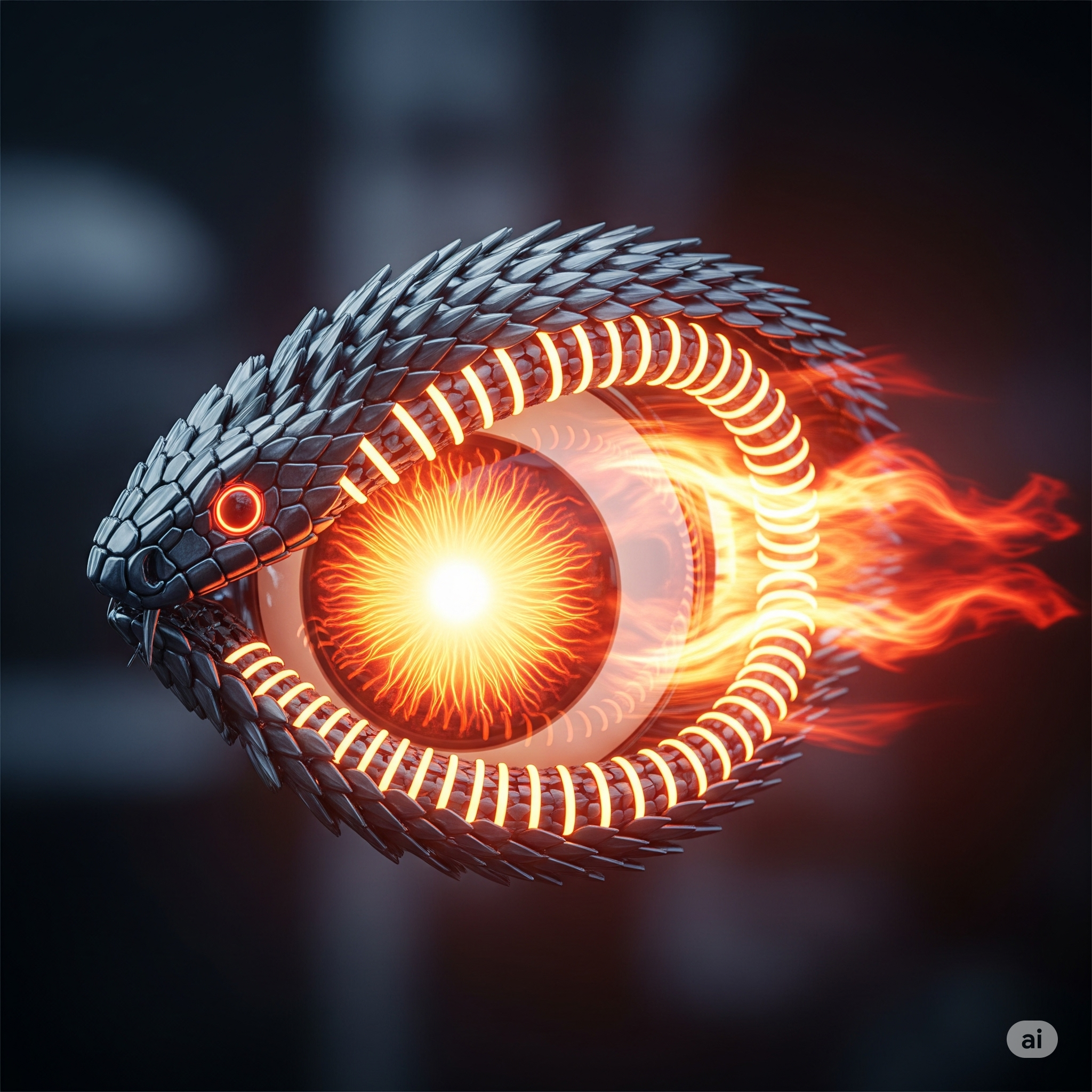A World Beyond Human Sight
While humans rely primarily on visible light to navigate their surroundings, many creatures in nature have evolved to see beyond the visible spectrum. Some species, such as certain snakes and insects, possess infrared (IR) vision—a remarkable biological adaptation that allows them to detect the heat emitted by objects, not just their reflected light.
This blog explores how these natural infrared capabilities work and how they’re inspiring technological innovations in fields ranging from artificial intelligence and robotics to surveillance and medical imaging.
What Is Infrared Vision?
Infrared vision refers to the ability to detect infrared radiation, which lies just beyond the visible spectrum (wavelengths of ~700 nanometers to 1 millimeter). All warm-blooded animals emit heat, which can be picked up as infrared radiation.
While humans can’t naturally perceive this radiation, some animals have evolved unique mechanisms to sense it—especially those that hunt in the dark or operate in low-visibility environments.
Case Study 1: Pit Vipers and Thermal Imaging
🔥 Species: Pit Vipers, Pythons, and Boas
These snakes are famous for their “pit organs”, located between the eyes and nostrils. These organs are not eyes, but rather highly sensitive thermal detectors capable of sensing minute temperature differences (as small as 0.003°C).
🧠 How It Works:
- The pit organ is lined with a membrane containing heat-sensitive ion channels.
- Infrared radiation warms the membrane, altering ion flow.
- This data is sent to the brain, creating a low-resolution “thermal image” of the surroundings.
- Snakes integrate this with visual and olfactory inputs for accurate prey detection—even in complete darkness.
🔍 Use Case in Nature:
- Ambush hunting: Snakes strike with remarkable precision even without visual cues.
- Thermal contrast: Helps in identifying warm-blooded prey hidden in foliage or burrows.
Case Study 2: Fire Beetles and Infrared Forest Fires
🔥 Species: Melanophila acuminata (Fire Beetle)
Fire beetles are drawn to burning forests from miles away—not to escape, but to lay their eggs in freshly burned wood where predators are scarce.
🧠 How It Works:
- They possess specialized infrared sensors on their thorax.
- These sensors can detect fires from up to 80 kilometers away.
- Some species even use ball-shaped IR detectors that vibrate in response to thermal signals.
🔍 Use Case in Nature:
- Reproductive strategy: Burned wood provides the perfect substrate for larvae.
- Navigation aid: Even in smoke-dense environments, they can locate heat sources with precision.
Other Infrared-Sensitive Creatures
- Vampire bats: Use infrared sensors on their snouts to locate blood-rich areas on prey.
- Certain frogs: May detect warm insects via primitive IR sensing.
- Jewel beetles: Similar to fire beetles, use IR detection to find fire-damaged trees.
Biomimicry in Action: Lessons for Tech Innovation
1. AI-Based Night Vision Systems
With inspiration from snakes, robotic “pit sensors” are developing for autonomous vehicles, military drones, and surveillance devices.
- Use case: Detect humans, animals, or heat leaks in total darkness.
- Example: IR-based facial recognition that functions in zero-light environments.
2. Medical Thermography
Just as fire beetles detect thermal changes, infrared imaging in hospitals helps:
- Detect inflammation, tumors, or vascular disorders
- Monitor skin infections or diabetic ulcers
3. Infrared Wearables
Inspired by nature, engineers are designing smart textiles embedded with infrared sensors to:
- Monitor body temperature in real time
- Predict heat strokes in outdoor laborers or athletes
4. Disaster-Relief Robotics
Snake-like robots with IR vision are used to deploy in:
- Earthquake zones to detect trapped survivors
- Hazardous areas where visual cues are compromised
Why Infrared Vision Matters in Evolution
Infrared vision gives animals a competitive edge:
- In darkness, vision is compromised, but heat is always present.
- It allows detection of camouflaged prey, night predators, and even changing weather patterns.
From an evolutionary perspective, these adaptations reflect a deep bio-neural integration of sensory inputs that modern AI still struggles to replicate.
Technological Challenges in Imitating Nature
While we’ve made strides in IR tech, replicating nature’s subtlety is hard:
| Challenge | Why It Matters |
|---|---|
| Energy Efficiency | Natural systems use minimal energy. Current IR sensors often need cooling systems. |
| Resolution Integration | Snakes combine thermal and visual maps fluidly; robots need complex algorithms. |
| Miniaturization | Insects detect IR with micrometer-sized organs; wearable sensors are still bulky. |
| Context Awareness | Nature interprets heat in context (e.g., prey vs. fire). Machines lack this nuance. |
How Close Are We to Natural IR Vision?
We’re getting there. Modern IR sensors can:
- Detect human presence at distances >200m
- Operate in thermal noise conditions
- Combine IR and AI to distinguish between human, animal, and vehicle signatures
But nature still wins in terms of:
- Adaptability
- Energy economy
- Integration with other senses
Conclusion: Nature as the Ultimate Innovator
Infrared vision in snakes and insects teaches us that the world we “see” is only a fraction of what exists. These species evolved to tap into energy signatures that are invisible to us—and they’ve done so with biological efficiency and precision that continue to inspire engineers and scientists.
Whether it’s improving search-and-rescue bots, designing next-gen night vision, or reimagining AI-based sensing systems, the future of innovation will likely be written by observing the ancient, elegant systems found in nature.
As we unlock the mysteries of the animal kingdom, one thing becomes clear: evolution has already solved problems we’re just beginning to understand.









+ There are no comments
Add yours